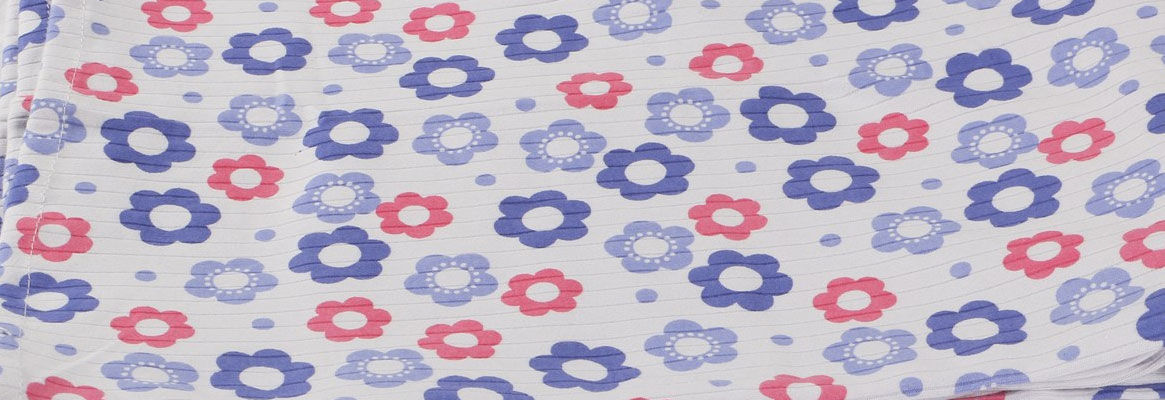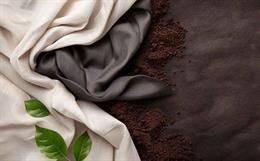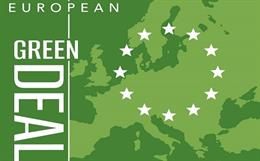By:
Tanveer Malik*, Krishna Gadodiyaand Anmol Kumar#
Shri Vaishnav Institute of Technologyand Science Indore
*Faculty in Shri Vaishnav Institute of Technology andScience
# Students of Third year TextileTechnological Department
ABSTRACT
In todays era of modernization of the textile industry, weare going through advancements of technology in every field of this industry.The world where this would lead us would be astonishingly hi-tech andmaterialistic. To ensure our security and safety from the future hazards, weneed to equally development the technology for our protection. With regard totextiles, the protective textile field of the smart textiles has to fulfillthis requirement. A Mosquito repellent textile is one such textile product. Itprotects the human beings from the bite of mosquitoes and thereby promisingsafety from the diseases like malaria and Nile fever. To impart this charactera finish of the mosquito repelling agent is given to the textile material.Thorough research and development has facilitated the applicability of certainchemicals on the textile products, which sustain this character for areasonable period.
Insect repellent textiles are also a part of protectivetextiles which help in protection from the species that are prone to causedamage in some or the other manner. These textile products find theirapplication over a wide range. A lot has been achieved and much more is yet tobe covered, as there is no end to it. What can be done to the best is that thistechnology can be imparted to the fibres from within. Also keeping in mind theecological and economical aspects, efforts should be made to make this allavailable to the commons.
This paper consists of a detailed discussion of the MOSQUITOREPELLENT TEXTILES, their applications and further scope of research anddevelopment.
INTRODUCTION
Todays era is the one of modernization of the textileindustry or the world of textile. Every sector of textile and every fieldrelated to textiles is developing with the advancements taking place. Smarttextiles or functional textiles are one such field. This field as I see is thefastest growing one in the textile industry.
Protective textiles are among one such smart application ofsmart technology in textiles. Protective textiles refer to those textileproducts which have a functionality of giving protection from something in someor the other sense.
These can be mosquito repelling or may be insect repellingand also may be anti bacterial and anti fungal. These may also be heat andcold resistant or with any other property. Although this sector contributes 1%to the total sales of the smart textiles, still has a good scope for growth.
MOSQUITO REPELLENT TEXTILE
Basically mosquito repelling textiles are the ones whichhave a character of repelling mosquitoes. This feature was developed as a needin sense of protection from the mosquitoes in the areas which are habitats ofthe mosquitoes and are prone to disease like malaria.
To impart this feature, the textile material is given an anti mosquito finish with an agent. This agent is capable of being used on textiles without spoiling their characteristics and has good washing fastness.
NEED OF MOSQUITO REPELLENT TEXTILE
Because of global warming the distribution of mosquitoes has expanded from tropical regions to northern latitudes, and that leads to a spread in sources of viral infection from mosquitoes. Especially, the West Nile fever virus, which has infected many people around the world recently, has become a big issue. West Nile fever occurs routinely in Africa as its virus was first recognized in humans at the West Nile District of Uganda in 1937, and then infections were confirmed in Israel, France and South Africa and it is now showing signs of spreading further all over the world. The first outbreak occurred in New York City in 1999, which spread rapidly to over 4000 people all over the U.S. and killed over 240 people.
It is likely that the virus arrived via wild birds imported as pets and via plane or boat in an infected mosquito. Persons diagnosed with the disease have recently even been confirmed in the island country of Japan with the wave of globalization, and the Ministry of Health, Labour and Welfare requires cases be reported to prefectural governors under regulations for disease control and prevention.
West Nile fever is on an increase on the global scale
Symptoms of West Nile fever include sudden high fever over 39 degrees, headache, muscle ache, and a rash after an incubation period of 2 days to 2 weeks, and have some similarity to atypical pneumonia. About 20 % of infected people have a chance of developing the disease, and 1 % become desperately ill causing brain fever which leads to eventual death.
Thus, West Nile fever is a terrifying disease after being exposed to it.
On an overall basis, the need is for finishing textile products to protect against mosquito-transmitted viral infections such as Malaria, West Nile fever and Japanese encephalitis
THE VERY FIRST MILESTONE:
Daiwa Chemical was the first in Japan to introduce a mosquito repellent called Kaknock, a medicated cosmetic agent which repels mosquitoes by direct application on the skin in 1947.
FURTHER DEVELOPMENTS:
Further an anti-mosquito finishing agent from Daiwa Chemical, Aninsen CLC-3600, was developed.
After the experience with kaknock, Daiwa Chemical put Aninsen CLC-3600, on textiles. This is capable of being used without spoiling their characteristics and has good washing fastness. Aninsen CLC-3600 on textile products, can suppress mosquito-transmitted diseases such as West Nile fever, malaria and Japanese encephalitis.
Finishing textiles with Aninsen CLC-3600 keeps mosquitoes away from the processed surface before blood sucking behavior.
Aninsen CLC-3600
|
Characteristics: |
Milky white liquid |
|
Ionicity: |
Anionic |
|
Oral toxicity (rat): |
LD50 > 5,000mg/kg |
|
Component: |
Toluamide compounds |
|
Features: |
Repels mosquitoes by processing of fiber using
organic compounds. |
MECHANISM OF REPELLENT ACTION:
The action of repellent agent for blood-sucking insects including mosquitoes can be broadly divided into two types which are actions to repel insects by acting on the olfactory and tactile senses.
Action of repellent on sense of smell is called transpiration repelling, and this has the effect of keeping insects away without them touching a surface processed with the repellent agent. How it works is that repellent molecules block insects humidity sensory holes, which makes humans inaccessible to insects by inhibiting the function of sensing moisture, while insects usually use warm and humid convection rising from the human body as a guide for contacting humans sensing an increase in atmospheric carbon dioxide concentrations.
Action of repellent stimulating sense of touch is called direct-contact repelling, and this drives insects off the processed surface before blood sucking even after touching the surface.
It is believed that repellent substances work on insects peripheral nervous systems when contact is made, causing a collaterally-expressed confusional state and inhibition under sublethal doses before knockdown and lethal action.
Microencapsulation is one another technique which the clothing manufacturers of this field are using to add value to their ranges. This technology is still relatively new to the textile and apparel industry.
This innovative technology makes use of micro capsules which act as tiny containers of solids or liquids. These containers release their core contents under controlled conditions to suit a specific purpose.
With realization of Microencapsulation, Aninsen CLC-3600 makes possible anti-mosquito finishing on textiles which require washing fastness.
Microencapsulation is already used to impart a wide range of features, including:
1. Insect-repellent and insect-resist treatments
2. Anti-microbial and deodorizing finishes
3. The controlled release of active substrates
FIELD TESTS: THE MOST MEANINGFUL EVIDENCE FOR THE EFFICACY OF A TREATED TEXTILE
Field studies are the ultimate verification of the performance of your product. The most realistic conditions deliver the most meaningful results.
Testing repellent-treated textiles in the field near Regensburg. The location in which these tests were performed is especially rich in the floodwater mosquitoes Aedes vexans and edes/Ochlerotatus sticticus. Ae. vexans is distributed almost world-wide, Ae./Oc. sticticus in Europe, northern Asia, and North America.
Indoor tests: application tests under constant conditions
This procedure complies with a protocol which was developed for the Stiftung Warentest, the German equivalent of the Consumer Reports in the United States. The test rooms are air conditioned, and the number, age, and species of the mosquitoes used in the study can be controlled. This test is a good alternative field tests: More realistic than cage tests, but possible at any time and at less expense.
Cone test
Cone test of an insecticide-treated textile. Mosquitoes (usually malaria mosquitoes, Anopheles gambiae) are introduced into a standardized cone for a defined time span, then removed and transferred to small cages to determine the knock-down and knock-dead rates.
Cage tests of repellent-treated textiles: swift and cost-effective
Cage tests are the quick and cost-effective way determine the mosquito-repelling qualities of treated textiles. They are ideal for product development. The tests follow the acknowledged protocol for cage tests of repellents. For such a test, volunteers cover a defined area of their forearms with the textiles and then present it to hungry mosquitoes in cage.
Insect repellence
It is a universal need for outdoor fabrics suitable for apparel use to provide long term insect repellency. Although many insect repellents are effective when applied to the skin as a spray or lotion, their effectiveness is known to decline with time.
The effectiveness of insect repellents has known to improve when such repellents are directly applied to fabrics which are suitable for outdoor use, and various techniques have been suggested for providing sustained release of an insect control agent.
For example: An invention provides a micro-capsular insecticidal composition of a pyrethroid and a biological synergist capable of controlling insects for four days.
An amine insect repellent such as, for example, N,N'-diethyl-m-toluamide (DEET) is an effective insect repellent. In addition, it is believed that DEET is generally environmentally safe and leaves no or minimal harmful residues. DEET is effective on biting flies, chiggers, deerflies, fleas, leeches, mosquitoes, and ticks.
The object of these inventions is to provide an
insect-repellent composition and process of making same such that the insect
repellent is slowly released. It is a further object of this invention that it
may be applied to fabric substrate such as woven,non-woven and knit substrates.
Field Tests for insect repellents
The insect-repellent compositions of the present invention were found to afford
the wearer complete protection under most types of weather and infestation
conditions. Furthermore, the insect-repellency effectiveness of the fabric
substrate treatment was found to span up to a period of about several hours to
at least several weeks.
Insect repelling agents:
Aninsen CBL(anti-mite finishing agent)
|
Characteristics: |
Pale yellow liquid |
|
Ionicity: |
Nonionic, anionic |
|
Oral toxicity (rat): |
LD50 > 2,000mg/kg |
|
Component: |
Organic acid ester compounds |
|
Features: |
Repels mites that cause allergies through the post processing of
fiber using organic compounds |
Evasten CBK
(anti-mite, -bacteria and -odor finishing agent)
|
Characteristics: |
Pale yellow liquid |
|
Ionicity: |
Nonionic, Cationic |
|
Oral toxicity (rat): |
LD50 > 2,000mg/kg |
|
Component: |
Organic acid ester compounds |
|
Features: |
A cationic type of Aninsen CBL |
Some anti microbial and anti fungal agents:
Amolden MTS
|
Characteristics: |
Milky white viscous liquid |
|
Ionicity: |
Anionic |
|
Features: |
A very safe finishing agent with a wide range of microbial
control |
Amolden BIG
|
Characteristics: |
Pale yellow clear liquid |
|
Ionicity: |
Cationic |
|
Features: |
A cationic microbial control finishing agent |
Bioden PBT-35
|
Characteristics: |
White viscous liquid |
|
Ionicity: |
Anionic |
|
Features: |
A very safe antifungal finishing agent with
low toxicity |
Applications of these textile products.
The mosquito repellant textiles can be used in apparels and also in home textile industry.
In the mosquito prone areas these textiles find their applications in wall coverings & tents.
The insect repelling textiles find their applications in apparels and home textiles too.
Apart from these applications these textile materials can also be used for manufacturing bags used for storing eatables, textiles, perishable goods and all other goods prone to damage by insects.
Research and Development.
Past and current projects include:
- The development of highly specific and efficient mosquito attractants.
- The design and optimisation of novel trap systems for mosquitoes and other hematophageous insects, for the professional and retail markets.
- The development of an effective approach for the monitoring and surveillance of dengue mosquitoes in Brazil, using cheap attractants and simple traps.
- Using repellents and traps to create an efficient and non-toxic push and pull system to control mosquitoes at home.
- The development of an improved fly bait.
- Developing traps and attractants for sandflies.
Further scope of research and development.
Firstly, this technology can be imparted to fibres. Some genetic manipulation so as to impart this finish to fibres should be done.
For example: The BT Cotton as we know that gives a very good yield. This is because it is genetically so modified that the genes of the insects which other wise cause harm to the plants are injected into the seeds. This imparts a repelling character into the plant and thus it gives a good yield.
This way, the fibres can be modified such that they get repellent character from within thereby, giving a scope for better growth of this technology.
Secondly, the ecological and economical aspect should also be taken care of and
the technology should be imparted through some natural sources other than
chemicals which help in maintaining the ecological balance and also in making
the goods available to the commons. Neem leaves can be of great importance
in this regard.
ACKNOWLEDGEMENT:
First of all we would like to express profound gratitude to the management of the institute, Administrative officer Shri. R.C.Parmar, Principal Dr.Ing.V.P.Singh, Advisor Prof. Dr. H.V.S.Murthy and Head of the department Prof. Dr.Prabhakar Bhat for giving encouragement and guidance to work on Mosquito repellent textiles: An overview.
REFERENCES:
▪ The Journal of Textile Association
▪ www.biogents.com/en/treated-textiles.html
▪ www.textileinfo.com/en/chemicals/daiwa/news.html
▪ http://www.expresstextile.com/20050515/processworld01.shtml
▪ www.healthguardcorporation.com/products/products.htm
To read more articles on Textile, Industry, Technical Textile, Dyes & Chemicals, Machinery, Fashion, Apparel, Technology, Retail, Leather, Footwear & Jewellery, Software and General please visit http://articles.fibre2fashion.com
To promote your company, product and services via promotional article, follow this link: http://www.fibre2fashion.com/services/article-writing-service/content-promotion services.asp



_Small.jpg)



